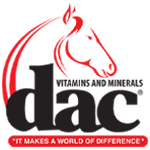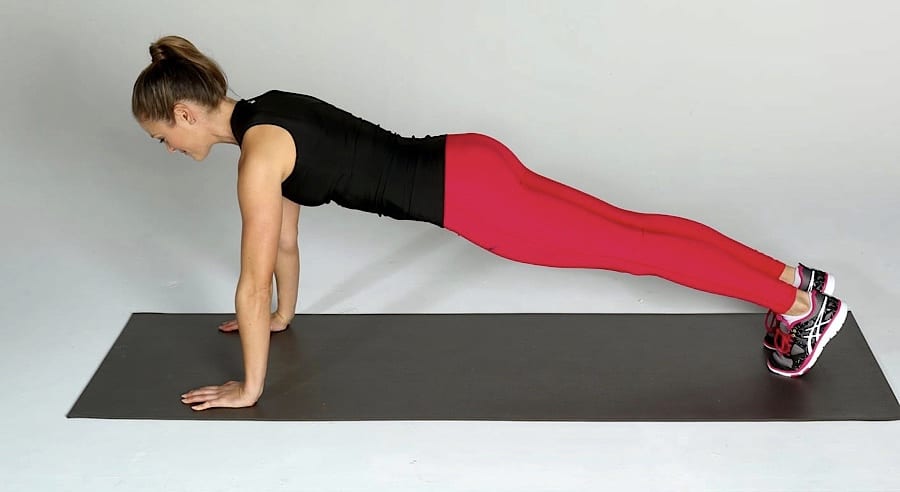When you’re stuck at home with no horses to ride, staying fit and in riding shape is very important to maintain muscle and to stay prepared for showing. While exercising is fantastic for equestrians who aren’t able to ride, it’s essential to do exercises that focus on the muscles that you need for riding.
See what exercises and workouts Ohio physical therapist and equestrian Jennifer D’Onofrio recommends. As always, please refer to a physician for clearance for exercise if you have any preexisting medical conditions.
Girls who show together, grow together
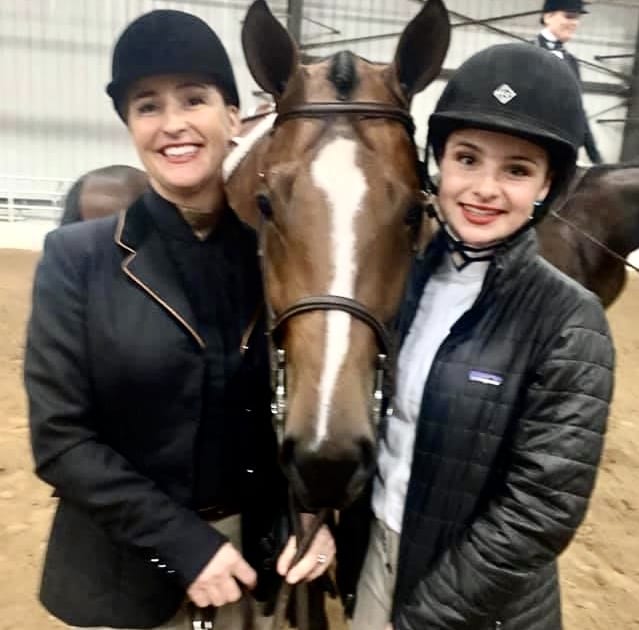 Not only do Jennifer D’Onofrio and her daughter Bella show horses together, but they also workout together. Jennifer says, “While unable to ride, my daughter Bella and I have focused on core and cardio exercises. We primarily do interval training on a Peloton treadmill. The quick changes in heart rate will have her in great shape for the long-extended trots in showmanship, and it’s great for weight control for me.
Not only do Jennifer D’Onofrio and her daughter Bella show horses together, but they also workout together. Jennifer says, “While unable to ride, my daughter Bella and I have focused on core and cardio exercises. We primarily do interval training on a Peloton treadmill. The quick changes in heart rate will have her in great shape for the long-extended trots in showmanship, and it’s great for weight control for me.
D’Onofrio continues, “As for core workouts, we do all of our core exercises with a slight posterior tilt of the pelvis to encourage our core to not arch our backs for classes like horsemanship where riding form is vital. I think core strength is important in all sports, but especially riding. You are constantly using your arms and lots of leg, so having a stable, reactive core makes it prettier and quieter.”
When running, jogging and doing cardio exercise, Jennifer suggests having three set paces. Those three paces being, a base pace, push pace, and an all-out pace. A base pace is a steady jog that is maintainable for twenty to thirty minutes. A push pace is a quick run that is maintainable for three to five minutes. Lastly, an all-out pace is a full-on sprint that is maintainable for thirty seconds to a minute.
Strong core, steady mind
If there’s one thing that you take away from this article, let it be that as an equestrian, core strength is your best friend. You need strong abdominal muscles in all disciplines, classes and types of riding…from equitation to reining to horsemanship.
There are hundreds of different core workouts that you can do to gain muscle, but one that D’Onofrio recommends is the plank. For the plank exercise, you’ll get on all fours, facing the ground. Your arms need to be straight with only your hands and toes touching the ground. You  want your body to be straight without your bottom sagging or sticking up in the air. You need to tighten your belly to your spine and hold for thirty to sixty seconds.
want your body to be straight without your bottom sagging or sticking up in the air. You need to tighten your belly to your spine and hold for thirty to sixty seconds.
Jennifer says, “As you advance, move into what’s called a “Dead Bug” position. This is lifting the opposite arm and leg (Ex: left arm, right leg or right arm, left leg) but keeping a slight posterior tilt with the abdominals sucked into the spine. I feel the movement mimics our requirement to move our arms and legs as we maintain a tight core.”
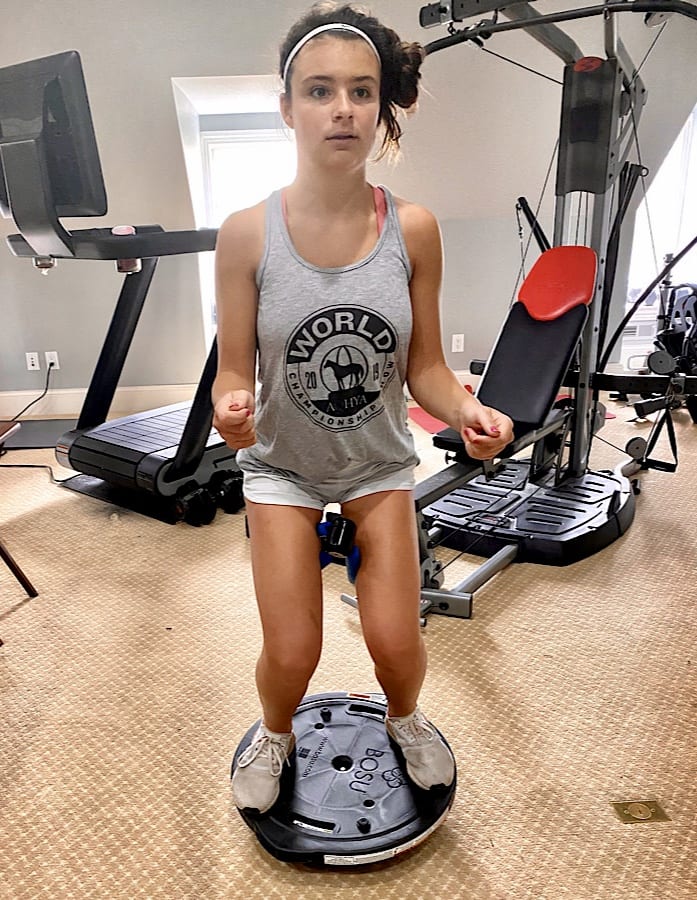 Another exercise that D’Onofrio recommends is a therapy ball or a Bosu ball. A Bosu ball is a half of a rubber sphere with a hard, flat top. These can be used for a multitude of exercises. “As we ride a moving object, I like to incorporate a therapy ball or a Bosu ball to mimic an unstable surface; you can incorporate endless exercise on top of either side including, squats, lunges and seated marching with posterior tilt.”
Another exercise that D’Onofrio recommends is a therapy ball or a Bosu ball. A Bosu ball is a half of a rubber sphere with a hard, flat top. These can be used for a multitude of exercises. “As we ride a moving object, I like to incorporate a therapy ball or a Bosu ball to mimic an unstable surface; you can incorporate endless exercise on top of either side including, squats, lunges and seated marching with posterior tilt.”
Eyes up, heels down
One of the most important aspects of riding is keeping your heels down. This is more easily achievable if your muscles are prepared. You can keep those heels strong at home by doing basic heel cord stretches.
This consists of standing on a step, ledge or another elevated object and slowly dropping one of your heels off the edge, with only your toes, the ball of your foot and your support foot left on the surface.
Jennifer suggests doing three repetitions of thirty seconds each. She also recommends keeping a slight bend in your knee as you are doing this stretch since our knees are bent during riding.
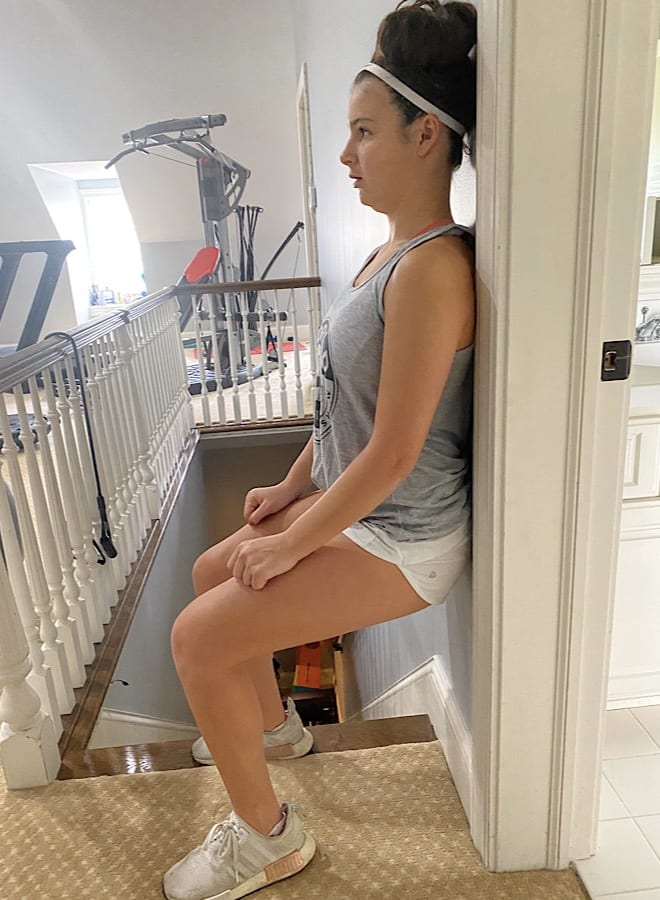 Additionally, D’Onofrio recommends exercises that include bridges on an exercise ball and wall sits. Bridges on the ball are composed of keeping your head and shoulders on the floor while the rest of your body is lifted off the ground.
Additionally, D’Onofrio recommends exercises that include bridges on an exercise ball and wall sits. Bridges on the ball are composed of keeping your head and shoulders on the floor while the rest of your body is lifted off the ground.
Place your feet on an exercise ball and maintain a slight bend in the knees. This will engage and strengthen your hamstrings and back muscles. Wall sits consist of keeping your head and back pressed up against the wall with your legs squatted at a ninety-degree angle. This will work on the head, shoulder and hip relationship required in horsemanship.
With all of these exercises, plus all of the yoga, stretches, weight lifting and more that you can do, there’s something for everybody when it comes to staying in shape.
So, whether you’re a world champion equestrian or just someone who likes to trail ride, you can get in the best riding shape of your life by exercising correctly. So, get out there, do some planks, squats, lunges, cardio, Bosu ball exercises and more and make your horse trainers proud.




